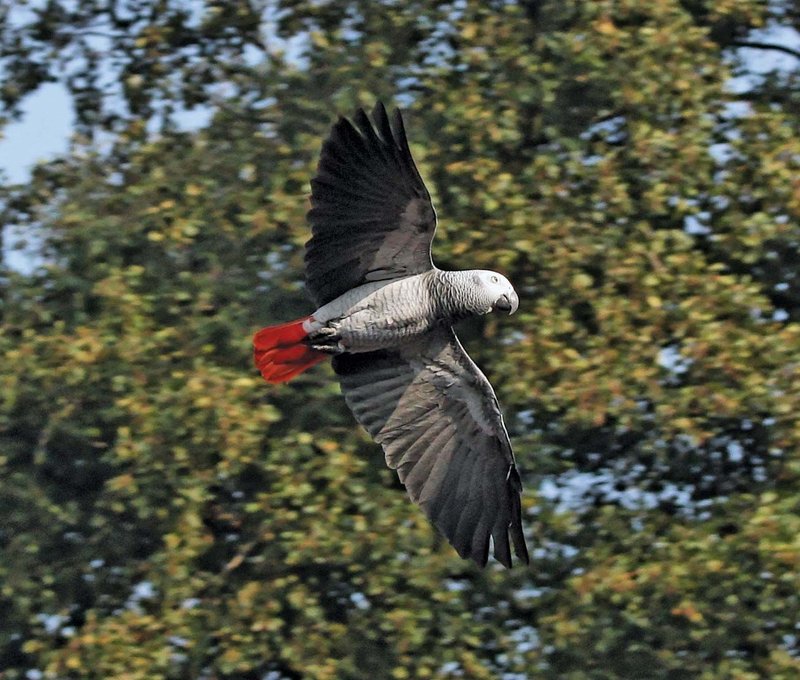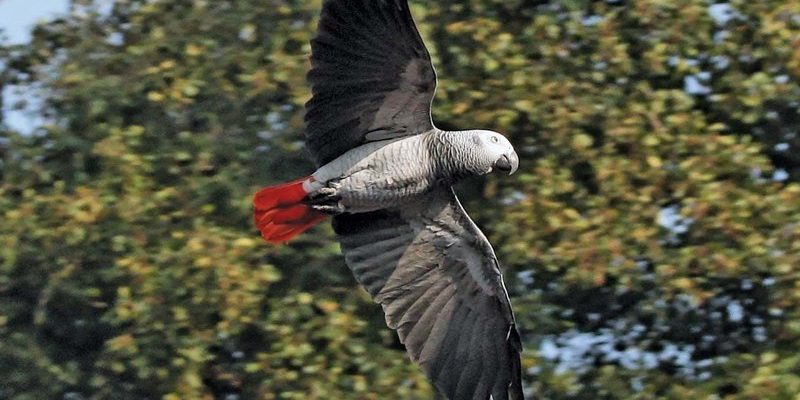
The lifecycle of African Grey Parrots is a journey filled with significant milestones, much like our own lives. From choosing the right nesting site to raising chicks, every step is critical to their survival. By unpacking their nesting habits, we can learn how these parrots communicate, bond, and ensure the next generation’s success. So, grab a cup of coffee, and let’s dive into the world of these incredible birds!
Understanding African Grey Parrots’ Natural Habitat
African Grey Parrots are native to the dense rainforests of West and Central Africa. Their natural environment is rich with towering trees and lush greenery, providing the perfect backdrop for their nesting habits. These parrots are known to prefer locations like hollowed-out trees or crevices in rocky surfaces. This choice of nesting site is crucial, as it offers protection from predators and the elements.
Here’s the thing: finding a suitable nest is not just about safety; it’s about comfort too. Once a pair of African Greys finds a cozy spot, they often return to the same location year after year. Isn’t that sweet? This consistency helps them establish a routine and bond with their environment, which is vital for raising healthy chicks later on.
During the nesting season, which typically ranges from January to June, these birds become quite selective. A couple might spend days inspecting potential nesting sites before making a final choice. This thorough selection process ensures they find a safe haven where their future chicks can thrive.
Pair Bonding and Courtship Rituals
Before the nesting begins, African Grey Parrots engage in fascinating courtship rituals. These rituals are much like a dance, full of preening, calling, and playful interaction. This bonding is not only essential for the convenience of nesting; it also strengthens their relationship as partners.
During this period, male African Greys will display their vocal talents, showcasing their impressive ability to mimic sounds and even human speech. It’s like they’re auditioning for the role of loving partner, trying to win over their mate with charm and wit. This playful communication helps solidify their bond, making it easier for them to work together in finding a suitable nest.
Once a pair has established a strong connection, they usually mate for life. This lifelong partnership is fundamental, as it ensures both parents are committed to nurturing their offspring. You might be wondering how these bonds look over time—imagine a couple that talks, plays, and supports each other throughout their journey. That’s exactly what these parrots do!
The Nesting Process
Now, let’s talk about the actual nesting process. After the couple selects their perfect spot, they’ll spend time preparing it for their future chicks. Unlike many birds who build elaborate nests with twigs and grass, African Grey Parrots often take advantage of existing natural hollows. They may clear out debris or add soft materials like feathers or moss to create a comfortable environment inside.
This nesting preparation is crucial. It helps ensure that the eggs remain safe and warm, an essential factor for successful incubation. And here’s a fun fact: African Grey Parrots typically lay anywhere between two to six eggs at a time! The female usually takes the lead in incubating the eggs, which can take about 28 to 30 days before hatching.
It’s worth noting that both parents play a role after the eggs hatch. They share responsibilities in feeding and caring for the chicks, which is vital for their growth and development. This cooperative parenting strategy is a hallmark of many intelligent species, showing just how committed these parrots are to their family unit.
Caring for the Chicks
Once the chicks hatch, the real adventure begins! Baby African Grey Parrots are born featherless and completely dependent on their parents. They rely on their mom and dad for warmth, food, and protection. It’s pretty remarkable to think about—these tiny creatures will grow into some of the most intelligent birds in the world.
The parents work tirelessly to feed the chicks, regurgitating food to them. It’s a labor of love, and honestly, it’s quite a sight to see. As the chicks begin to grow, they develop feathers and learn to vocalize—traits they’ll carry into adulthood. These early communication skills are essential, especially in a species known for its intelligence.
As the weeks go by, you can observe the chicks becoming more active and curious about their surroundings. Around 12 weeks of age, they’ll begin to fledge, or leave the nest, starting their journey as independent birds. This phase is a pivotal moment, showcasing their growth and development and preparing them for life outside the safety of their parents’ care.
The Importance of Nesting Habits to Conservation
Understanding the nesting habits of African Grey Parrots is crucial, especially in light of their declining populations due to habitat loss and the illegal pet trade. Conservation efforts focus on preserving their natural habitats, ensuring that these intelligent birds can continue their lifecycle without disruption.
By protecting the forests where they nest, we safeguard not only the African Grey Parrots but also countless other species that share their ecosystem. Engaging in local conservation initiatives or supporting organizations dedicated to wildlife protection can make a big impact. It helps raise awareness and fosters appreciation for these beautiful birds.
Every little effort counts. Whether it’s supporting ethical trade practices or promoting habitat preservation, we can all play a part in ensuring these parrots have a future filled with thriving nests and happy families.
The nesting habits and lifecycle of African Grey Parrots are a fascinating glimpse into their world. From their careful selection of nesting sites to the tender care they provide for their chicks, these birds show remarkable intelligence and devotion. By understanding their behaviors, we can appreciate the complexity of their lives and recognize the importance of conserving their habitats.
So, next time you hear someone marveling at the African Grey’s incredible talking abilities, remember the entire lifecycle behind those delightful chirps. They’re not just birds; they’re devoted parents and intelligent creatures that enrich our world. By supporting their conservation, we help ensure that future generations can also enjoy the beauty of African Grey Parrots.

